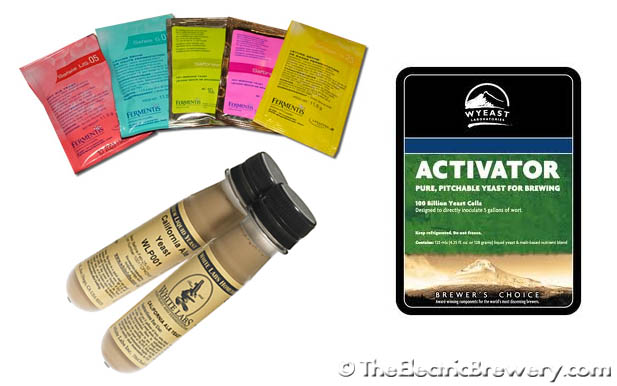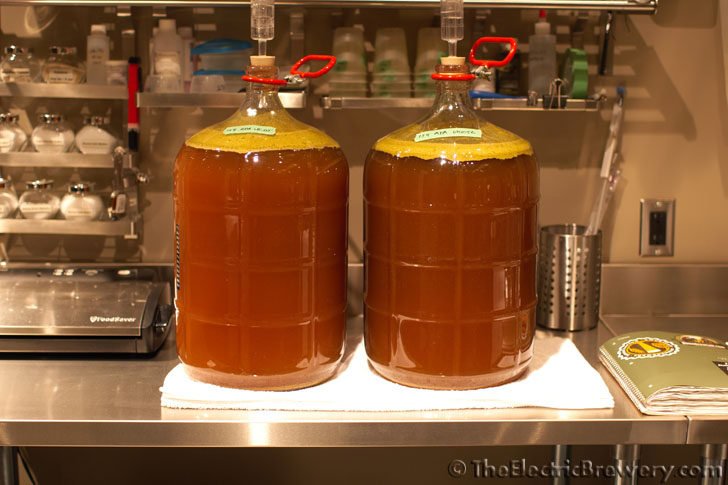kal
Well-Known Member

Hi everyone,
Safale US-05 dry yeast is my go to yeast for blonde ales, all american style pale ales (APAs), IPAs (AIPAs), as well as anything else that requires a clean fermentation. It's a yeast I know well and I use it a lot.
I like the convenience of this dry yeast as it keeps for years when kept in the freezer and is so much easier to use than liquid.
Some brewers have indicated that they prefer the liquid versions (Wyeast 1056 or White Labs WLP001 California Ale) because they taste better so I thought I'd do a series of tests, starting with an Organic Blonde Ale that is a light coloured 5.3% ABV (1.048 -> 1.007) made with 85% Organic Pils malt, 5% carafoam, 10% table sugar, hopped to 15 IBU with Crystal. It's meant to be an "everybody likes it" beer.
It was brewed on Feb 17, 2013.
In one fermenter with ~5.5 gallons of wort I pitched 12 grams of hydrated US-05 dry yeast at 66F. The yeast was one year old and had been stored in a freezer at 0F.
In the second fermenter with ~5.5 gallons of wort at 66F I pitched two WY1056 smack packs with manufacturing dates of Feb 4 (only 13 days old). Both were smacked and allowed to swell for 5 hours first.
Both were left to ferment at 64-66F ambient.
On Feb 25 (8 days later) both were at 1.008 / 68F. The WY1056 beer tasted crisper/brighter. The US-05 was more grainy tasting, more astringent.
On March 3 (14 days later) I racked to my 5 gallon 'brite' tanks and added gelatine to clear the beer. The beers tasted much more similar at this point.
On March 8 (19 days later) I kegged both and placed them in my conditioning fridge at 33-34F on C02 gas to carb them up.
On March 23, 15 days after putting them on C02, they are carbonated to approx 2 volumes. Fairly low, but I've always liked my beers less carb'ed than usual. There's less carbonic bite this way and I find I enjoy the flavour more, even with a lighter beer like this that doesn't have a ton of flavour.
At this point I did a 3 way test where you try and point out which beer is the different one: Two glasses of beer fermented with WY1056, one glass with beer fermented US-05. Labels were added on the bottom of the glasses so that I couldn't see them. My wife mixed them up and I tasted with my eyes closed. I tasted them all a few times and thought one of them was the different one (the US-05) so I pointed that one out. I was wrong.
My wife reshuffled them and I tried again, tasting each multiple times, jumping back and forth, trying to find a difference. I realized I couldn't tell them apart at all. I tasted again and ended up taking my best guess. I was wrong again.
My wife then tried twice, guessed twice, and was wrong both times.
Maybe others can tell the difference, but to our taste buds US-05 and WY1056 taste identical on lighter beers so I'll be sticking with using US-05 for these types of beers as dry yeast is (IMHO) so much easier to use.
I'm also trying the same two yeasts on an APA that I brewed recently with a massive hop stand to see if the hoppyness makes any difference. UPDATE: Same results. I was unable to tell any difference.
Note: US05, WY1056, and WLP001 are all based on the same Chico strain, so they are expected to taste similar. I was surprised in this case that I didn't notice any difference at all once the beer had been conditioned and carbonated.
I have a couple of vials of fresh WLP001 so next time I brew this I'll do the same experiment with US-05 and WLP001.
Kal


 )!
)!

